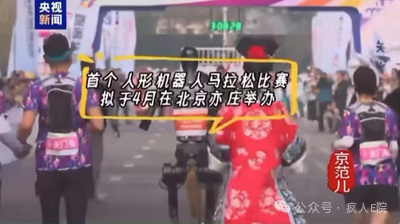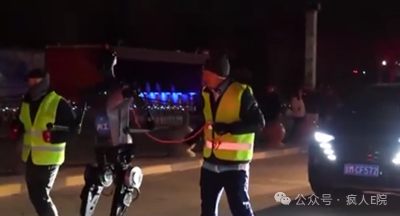
On April 19, 2025, the Yizhuang Half Marathon in Beijing hosted the world’s first competition featuring humanoid robots competing alongside humans, attracting significant attention. However, behind this seemingly high-tech and futuristic event, numerous thought-provoking issues were exposed.
During the competition, various situations arose. A robot named N2 finished in third place but was found post-race to have severe wear on the gears of its hip and knee joint reducers, resulting in a deviation in its movement trajectory. It ultimately completed the final sprint only after engineers manually adjusted its parameters. Valued at millions, the robot was on the verge of collapse due to the high-frequency operation of its joints over 21 kilometers. The only female-designed robot in the competition, “Huan Huan,” dramatically collapsed just 500 meters into the race due to a malfunction, with its battery sparking and forcing it to withdraw. Engineers explained that this was due to compatibility issues between the motion control algorithm and the cooling system; when the speed increased to 1.5 m/s, the joint sensors overheated, triggering a protective mechanism that caused program disruption. Another robot from Yushu Technology also faced issues, frequently falling and experiencing low battery power midway through the race, leading to its withdrawal.
These unexpected situations first exposed the technical shortcomings of humanoid robots. From a hardware perspective, critical components such as joints and batteries are severely lacking. The wear on the N2 robot’s joint reducer gears reflects that current materials cannot withstand the impacts of continuous high-frequency operation during a marathon. Even advanced designs that simulate muscle power using tendon-driven systems struggle to overcome material limitations. The endurance issues faced by many robots, including “Huan Huan” and the Yushu Technology robot, indicate that existing battery energy densities are low and charging speeds are slow, making it difficult for robots to sustain long-duration, high-intensity activities. In terms of software and algorithms, the limitations of algorithms under complex road conditions became apparent. Robots struggled to respond timely and accurately to various uncertainties on the track, such as curves, slopes, and manhole covers, leading to frequent imbalances and falls. For instance, some robots fell due to the path planning algorithm not accounting for slope angles, resulting in power distribution imbalances when climbing; during turns, the actual rotation angle of the motors deviated too much from the commands, causing gait distortion.
From an industry development perspective, this competition also revealed some deeper issues. On one hand, some companies exhibit a short-sighted mentality. Certain enterprises exaggerate the capabilities of their robots in product promotions, misleading the public and creating unrealistic expectations for robot performance in competitions. However, when robots encountered various issues during the race, the stark contrast between reality and promotion led to public skepticism towards the companies and the humanoid robot industry as a whole. On the other hand, this also reflects the overall immaturity of technology in the industry. Most humanoid robots are still in the stages of laboratory research or technology validation. While they can perform simple tasks in specific scenarios, they are far from being able to adapt to complex, open, and prolonged real-world situations like a marathon, both in terms of hardware reliability and the generalization capabilities of software algorithms.
Moreover, the organization of the event exposed the inadequacies of relevant testing standards. Prior to the competition, testing for the robots may have focused more on basic functions and simple scenario simulations, failing to adequately simulate the complex conditions of a marathon track and the challenges posed by prolonged activity on the robot’s hardware and software. If stricter and more realistic testing standards had been implemented before the event, some potential issues might have been identified and resolved in advance, reducing the failure rate during the competition.
The Yizhuang Robot Marathon serves as a mirror, clearly reflecting the issues present in humanoid robots regarding technology, industry development, and testing standards. However, these problems are not insurmountable barriers. The issues exposed by this event also point to directions for improvement and breakthroughs in industry development. It is believed that with continuous technological advancements and refinements, the application of humanoid robots in more complex scenarios will become increasingly reliable and mature.
Having outlined the issues revealed by the event, if you are interested in a deeper analysis of certain problems or the future development direction of the industry, I can further elaborate.
